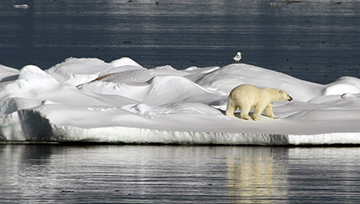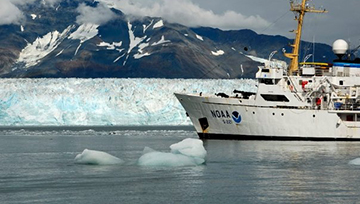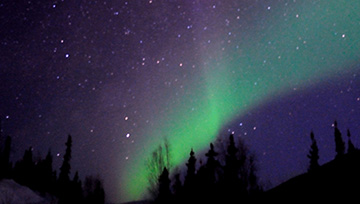NOAA's Arctic Vision and Strategy
About NOAA in the Arctic

NOAA's diverse activities in the Arctic provides science, service, and stewardship that supports people and commerce.
During the past thirty years, the Arctic environment has undergone profound and unprecedented changes. Temperatures have increased nearly four times faster than the global average and sea ice has diminished sharply. These changes have allowed an opening of the Arctic to new areas of commerce such as shipping, oil and mineral exploration and tourism.
The new opportunities have increased the need for better environmental intelligence to understand Arctic change and its impact on regional and global weather and climate as well as improved regional awareness to support communities and industry. The environmental intelligence that NOAA generates in the Arctic supports decisions and actions related to conservation and management to promote healthy, productive and resilient communities and ecosystems.
NOAA's Arctic Vision and Strategy
A vision, plan, and structure for supporting NOAA’s activities in the Arctic are characterized in these three main documents.
NOAA provides and supports a variety of critical services that communities in Alaska and operators in the Arctic rely on.
NOAA partners with scientific and governmental collaborators, non-governmental organizations, industry, academia and local and Indigenous communities to meet research, stewardship, and management needs in Alaska and the Arctic.
NOAA's Arctic Data
Access data portals and review guiding principles for supporting accessibility and collaboration on Arctic data.





